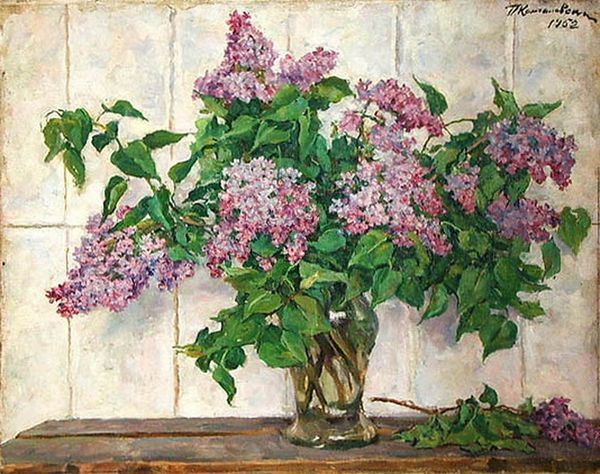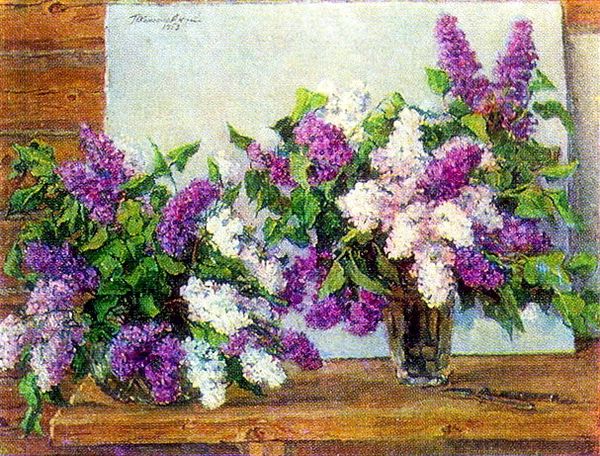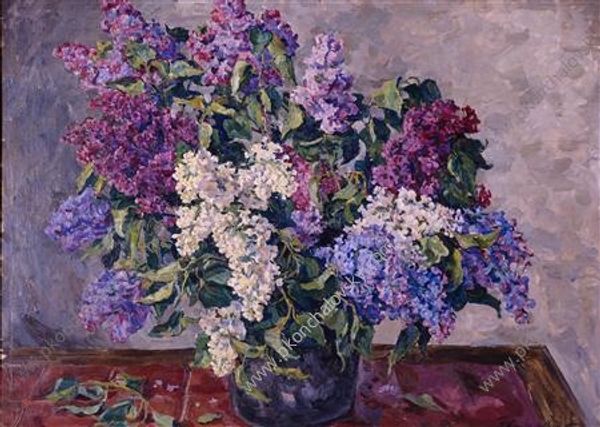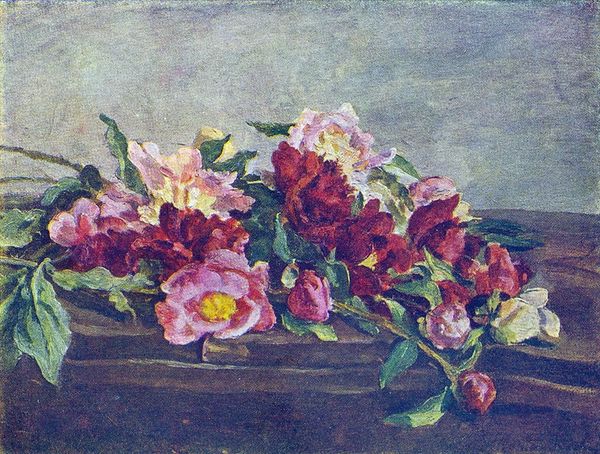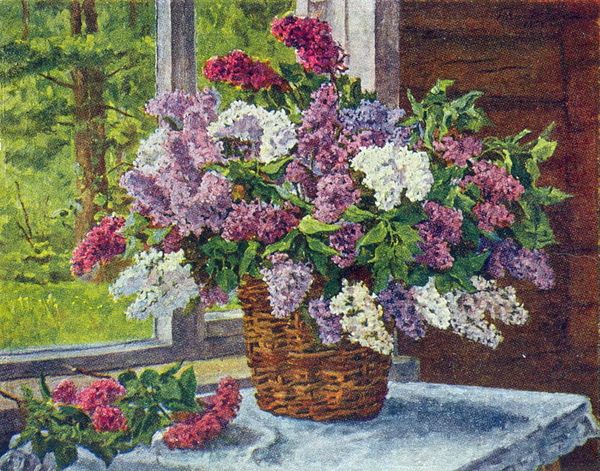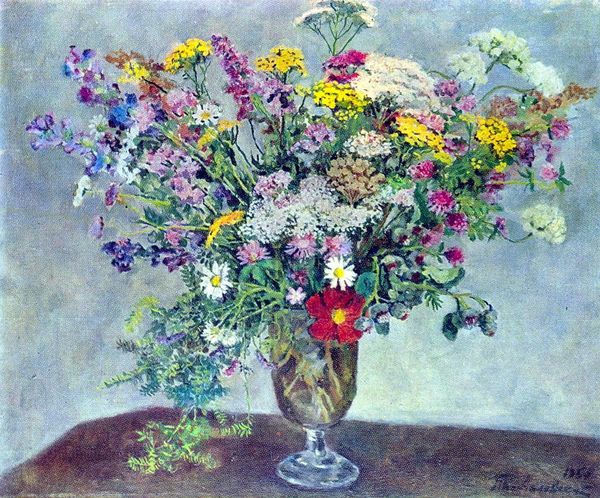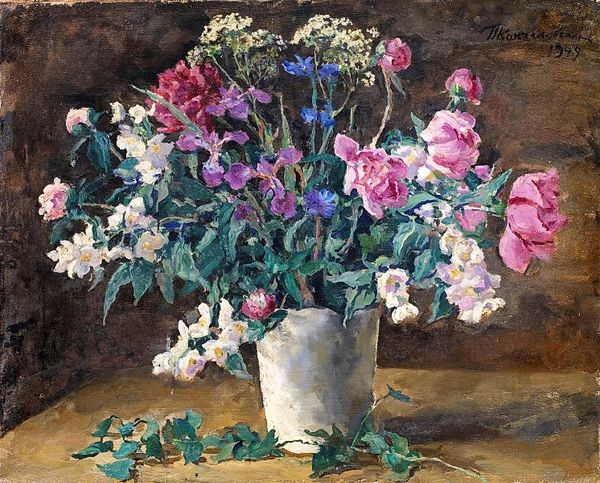
painting, oil-paint, impasto
#
painting
#
oil-paint
#
flower
#
soviet-nonconformist-art
#
impressionist landscape
#
possibly oil pastel
#
oil painting
#
impasto
#
plant
#
watercolor
#
realism
Dimensions: 137 x 186 cm
Copyright: Pyotr Konchalovsky,Fair Use
Curator: This is Pyotr Konchalovsky's "Still Life. Lilacs in two baskets," painted in 1939. Editor: The lilacs are so vibrant! It's interesting to see this subject treated with such impasto and intensity of color. How would you interpret this work? Curator: Given the historical context of 1939, on the eve of World War II, and Konchalovsky’s position within the Soviet art scene, this seemingly simple still life speaks volumes. Editor: In what ways? Curator: Consider the concept of "escapism" as a form of resistance. Under Stalin's regime, artistic expression was heavily controlled. Artists who didn’t conform to Socialist Realism often found subtle ways to express themselves, didn't they? This explosion of color and natural beauty can be viewed as a deliberate retreat from the grim realities of the time, a quiet rebellion against the pervasive greyness. The intimate focus on the domestic and natural realms acts as a kind of safe haven, an affirmation of life and beauty in the face of impending devastation. Editor: So, even a seemingly apolitical subject matter like lilacs could carry a subversive charge? Curator: Absolutely. It's crucial to remember that even the absence of overt political statements can be a statement in itself. Konchalovsky perhaps reclaims a sense of individual agency through the act of observing and celebrating the beauty of nature, implicitly resisting the all-encompassing demands of the state. What do you make of the choice of lilacs specifically? Editor: That's interesting. They symbolize love and renewal...almost defiant hope, maybe? Curator: Precisely! These blooms are also deeply tied to specific locales and domestic spaces, and offer an intimate counterpoint to monumental Socialist Realist works. The painting, when viewed through this lens, complicates easy readings of Soviet art from this period, inviting us to seek out acts of subtle resistance, defiance, and ultimately hope. Editor: This has really shifted my understanding. It is far more powerful than I initially thought. Curator: Indeed! Looking at art through an intersectional lens of history and social context can reveal layers of meaning and resistance often overlooked.
Comments
No comments
Be the first to comment and join the conversation on the ultimate creative platform.


